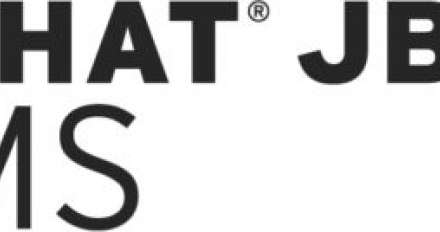
Your first Business Rules application on OpenShift: from Zero to Hero in 30 minutes


In this small screencast we'll show you how to get started with OpenShift using JBoss Tools. We'll show you how to create an new OpenShift application and import it to your Eclipse workspace. We'll then show you how to change the starter-application in your workspace, and push those changes to OpenShift.

Follow me at: http://twitter.com/lincolnthree In order to follow this tutorial, please make sure that you have installed JBoss Forge (at least Beta3): http://jboss.org/forge You will also need to install Git for your operating system: http://git-scm.com/ Be ready to follow the steps in the tutorial by signing up for a free account at http://openshift.com, and making sure that your SSH keys are configured correctly via the OpenShift quick-start guide. -------------------------------------------------------------- ++ Set up our OpenShift Project ++ 1. new-project --named forge-openshift-demo --topLevelPackage org.jboss.forge.openshift 2. forge install-plugin openshift-express 3. rhc-express setup --app forge 4. servlet setup 5. git add pom.xml src/ 6. rhc-express deploy ++ Add JPA and the Scaffold ++ 7. persistence setup --provider HIBERNATE --container JBOSS_AS7 8. scaffold setup 9. entity --named User 10. field string --named name 11. field int --named rating 12. scaffold from-entity 13. rest setup 14. rest endpoint-from-entity 15. git add pom.xml src/ 16. rhc-express deploy

Are you ready for BPM in the Cloud? The fully cloud enabled JBoss BPM Suite is now available on OpenShift as a bpmPaaS cartridge. We have not been idle in the background as this was developed and have put together some automated cartridge installation projects that kick start you with pre-loaded demo projects. Here we provide a video walkthrough covering the creation of your bpmPaaS instance on OpenShift and quick tour of how to run the Generic Loan demo project, all in just over 6 minutes.

Here is a fully automated cartridge installation for JBoss BRMS Cool Store in the OpenShift Cloud that will allow you to kick start a pre-loaded demo project in the OpenShift bpmPaaS based on JBoss BRMS. Get up and running in just minutes.

Ryan Hennessy, Sr. Solution Architect, Red Hat and Guna Vijayaratnam, Solutions Architect, Red Hat speak in this breakout session at Red Hat Summit 2017. The Red Hat team had the opportunity to work with a lot of customers, this one, in particular, was struggling with their application deployment process. Their current processes were fragile and didn’t meet the business needs to be more flexible, automated, and cloud-centric. The customer IT department realized if they didn’t address these problems soon there was a high risk that individual business units were going to start looking to other partners for serving their IT needs. In this session, we will cover in depth the following areas: Main hosting focus areas and business drivers that lead to the adoption of OpenShift Application delivery methodologies that were modernized using OpenShift How OpenShift was able to directly solve the challenges and focus areas set out by IT leadership. https://www.redhat.com/en/summit/2017/agenda/sessions

Zohaib Hhan, Practice Lead, Application Modernization & Migration, Red Hat and Malik Sayed, Sr. Manager, Digital Architecture, Verizon speak in this breakout session at the Red Hat Summit 2017. Enterprises generally have a significant portfolio of legacy applications running in production. Applications that have been developed 10, 15 years ago, or more. These applications stand in the critical path of revenue generation. It's not easy to just rip them out and replace them all with applications built on modern architectures, such as microservices and containers. Businesses can't afford downtime and certainly aren't willing to pay for something they can't see. We need the ability to modernize legacy applications while allowing IT to continue to deliver value—innovating from inside out. Verizon evaluated Red Hat OpenShift Container Platform to modernize their application portfolio. In this session, we'll present Verizon’s journey to containerize one of their most challenging applications. We'll show the results of a 2-month long proof-of-concept, including successes, misses, and a roadmap for application modernization. You'll learn about the journey, the pitfalls, and the lessons learned of modernizing complete application portfolios. Learn more: https://www.redhat.com/en/summit/2017/agenda/sessions

Hear from Clement Escoffier, Principal Software Engineer, Red Hat in this breakout session at Red Hat Summit 2017. Eclipse Vert.x is a toolkit to create reactive distributed and polyglot applications on the Java Virtual Machine (JVM). It takes the JVM to new levels of performance, yet has a small API. It lets you build scalable, microservice-based applications transparently distributed and packaged as a single jar file. This simplicity makes deploying and managing Vert.x applications on OpenShift a breeze. Upload your jar and Vert.x connects all your pods and services. That's not all, the application you're developing with Vert.x is "reactive": It's responsive, elastic, resilient, uses asynchronous message-passing saving resources, and handles a huge level of concurrency. How does that work on OpenShift? In this session, you'll see how the combination of Vert.x and OpenShift paves a new way to build and manage reactive systems. You'll see several examples and a demonstration of how Vert.x simplifies not only development, but thanks to OpenShift, the deployment and management of your distributed system. Everything you need will be covered in this session: service discovery, resilience pattern, rolling updates, monitoring, and metrics. This is a "slide-less" session consisting of pure, live coding. https://www.redhat.com/en/summit/2017/agenda/session

Hear from John Osborne, Sr. Solutions Architect, Red Hat, Harold Wong, Cloud Architect, Microsoft, and Jason Dudash, Specialist Solution Architect, Red Hat in this breakout session at Red Hat Summit 2017 For the past several years, Microsoft's approach has been to make Linux and open source technologies first class citizens in the public cloud. Microsoft engineers participate in key open source communities. In this joint session with Red Hat and Microsoft, we'll demonstrate technologies like .NET and SQL Server running on Red Hat Enterprise Linux-based containers in OpenShift on premise and in Azure. We'll also discuss the development and operational perspectives and things like security patching and scans. https://www.redhat.com/en/summit/2017/agenda/sessions

Hear from Don Schenk, Director of Developer Experience, Red Hat and Scott Hunter, Microsoft in this breakout session at Red Hat Summit 2017. In this session, we’ll show the evolution from a .NET application running on a server to a microservices architecture with zero-downtime deployments—including advanced techniques for optimizing performance. Join this session if you’re ready to apply your .NET skills to microservices and Linux containers. https://www.redhat.com/en/summit/2017/agenda/session

Hear from Rafael Benevides, Director of Developer Experience at Red Hat in this breakout session at Red Hat Summit 2017. The "deploy moment" is an occasion that still causes many developers to shiver. But it shouldn't be this way, at least not every time. Deployment failures, customer downtime, hundreds of calls to customer service—we've all been there. Luckily, today we have the tools and processes to turn the deploy moment into just another ordinary activity. In this session, we'll show you how to evolve your deployment process from the very basic zero downtime with some very interesting additional strategies such as blue/green, A/B, and canary deployments. You'll learn how to not only deploy your software faster, with a vastly better uptime, but how to use container technologies like OpenShift to get business feedback—and recover some well-deserved sleep time. https://www.redhat.com/en/summit/2017/agenda/sessions

James Strachan, sr. consulting software engineer, Red Hat, and James Rawlings, principal software engineer, Red Hat, discuss and demo continuous integration and continuous delivery (CI/CD) in OpenShift.io in this breakout session at Red Hat Summit 2017. James Strachan explains CI/CD and its importance to developing, testing, and releasing code. He then demos how it works in OpenShift.io using Jenkins pipelines. Watch the live demo to see it in action.

Pete Muir, technical director, Red Hat Developer Tools, and Gorkem Ercan, principal software engineer, Red Hat, present this breakout session on cloud workspaces in OpenShift.io at Red Hat Summit 2017. Pete discusses how cloud workspaces work in OpenShift.io and their capabilities. He explains the workspaces, describes how Eclipse Che fits in, and details why Red Hat chose this technology. He also outlines the benefits of running in a container. Gorkem presents a demo of the cloud workspaces, including coding, testing, debugging, and integrating analytics. The session closes with an audience Q&A.

Todd Mancini, lead product manager, Developer Tools, Red Hat, and SriKrishna Paparaju, sr. principal software engineer, Red Hat, talk about OpenShift.io analytics in this breakout session at Red Hat Summit 2017. Todd details the analytics capabilities of OpenShift.io—features available today and what’s coming in the future. With OpenShift.io, developers can take large data sets and infer issues, problems, and concerns to help them make better decisions. SriKrishna provides additional insight into the past, present, and future of Fabric8 and OpenShift.io analytics, including use cases.

Hear from Todd Mancini, lead product manager, Developer Tools, Red Hat, Pete Muir, technical director, Red Hat Developer Tools, and James Stachan, sr. consulting engineer, Red Hat, in this breakout session from Red Hat Summit 2017. The group shares the development journey of OpenShift.io, and the various developer needs considered when creating the product. They give a product demo of OpenShift.io, showing the benefits of developing, testing, and running on the same platform. The breakout session closes with an audience Q&A.

By aligning development and operations teams with solutions from Red Hat Consulting and OpenShift Enterprise by Red Hat, you can: -Reduce product cycle time. -Write applications faster. -Drive automation that strengthens the link between IT and the needs of your organization. This video includes a demonstration of OpenShift Enterprise.

If applications can run in containers and extract the maximum performance from the underlying hardware while respecting security and resource boundaries, why can’t databases? This video demonstrates MongoDB database deployed with Red Hat Enterprise Linux using Linux containers. Red Hat Enterprise Linux 7 enables your database environments to stay both flexible and current by utilizing Linux container technologies. This demo focuses on the advanced deployment scenarios called sharding and discusses the benefits of running containers for that purpose.

Intro to OpenShift Express (Fedora) - This video demonstrates how to install the OpenShift Express client utilities on the Fedora operating system. Furthermore, it provides a walk through of signing up for an RHN account using the OpenShift website and details steps to allow a user to create their first express domain. Please go to openshift.redhat.com for more details.

The Linux container technology in Red Hat Enterprise Linux now combines resource management, process isolation, and file system separation. Docker uses the Linux container capabilities to provide standardization, ease of use, and portability. See a demo of how to set up multiple containers, deploying an assortment of workloads, and measuring the performance impact of running them at the same time using prototype user interface.

Red Hat® Enterprise Linux® Atomic Host is a small footprint kernel optimized for running containers. This video demonstrates the deployment of an HPC application (Linpack) across multiple environments and discusses the benefits of running HPC applications in containers.

The Linux container technology in Red Hat Enterprise Linux now combines resource management, process isolation, and file system separation. Docker uses the Linux container capabilities to provide standardization, ease of use, and portability. See a demo of how to set up multiple containers, deploying an assortment of workloads, and measuring the performance impact of running them at the same time using prototype user interface.

This is a demonstration of Oracle databases being deployed with Red Hat Enterprise Linux using Linux containers. The demo also goes into comparing container deployments to more traditional bare-metal and virtual machine deployment scenario and discusses the benefits. See how Red Hat Enterprise Linux enables your database environments to stay both flexible and current by utilizing Linux container technologies for deploying Oracle 11gR2 on RHEL 6, Oracle 12c on RHEL 6, and Oracle 12c on RHEL 7.

In this demo, Scott Collier shows how to use Docker containers (the contents of an image and its features) to cat out contents of /etc/host, launch a web server, and bindmounting log files to see activity on host machines.

Mike McGrath, a cloud architect at Red Hat, speaks about the OpenShift project, including express--a way to easily on-board PHP, Ruby, and Python applications via standard, open interfaces. McGrath demonstrates the process of uploading and updating the applications in the cloud using express, as well as ways to snapshot, clean up, and remove applications that are being migrated or eliminated. Learn more about Red Hat OpenShift: http://openshift.redhat.com/app/ Learn more about Red Hat cloud technology: http://www.redhat.com/cloud/build/

Come learn about what goes on behind the scenes with Red Hat OpenShift and the implications of having all of a project's operations running entirely in the public cloud. Brett Lentz, senior software engineer at Red Hat, will cover the tools, design patterns, and security considerations that are critical to make operating in the public cloud a success. He will also spend a significant part of the session discussing configuration management and automation techniques as they are key factors for success in the OpenShift environment. Living in the public cloud has significant security implications that will be discussed in depth. Tools and concepts such as SELinux, update lifecycle management, and "SSL/TLS Everywhere" are not just good ideas, but crucial to succeeding in the public cloud. Brett will cover tools and techniques for easing the integration of these and other security tools. Brett will also discuss how identifying powerful, reusable design patterns has allowed the OpenShift team to find efficiencies, enabling it to move at a rapid pace and not just put out fires, but to continually roll out new features and incremental functionality improvements.